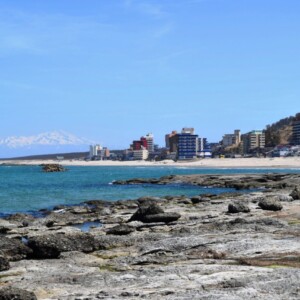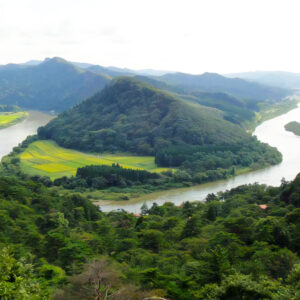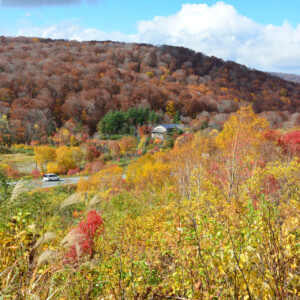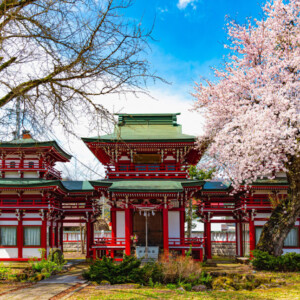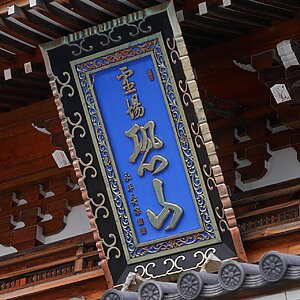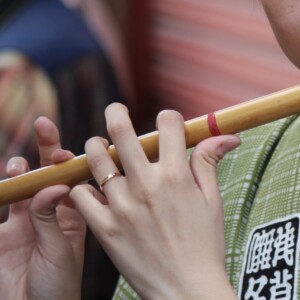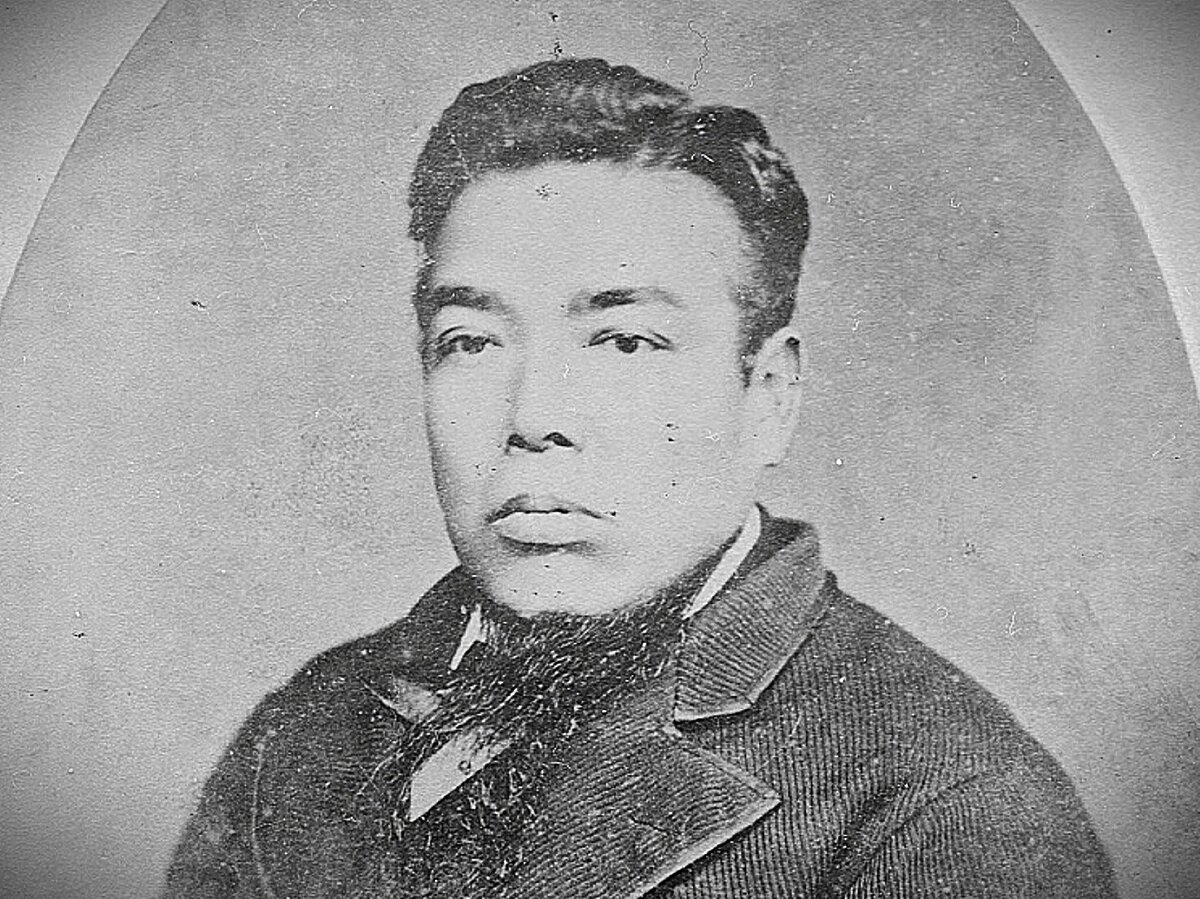
Yamagata City, Yamagata Prefecture, has completely changed its landscape due to Mishima Michiyo after the Meiji Restoration.
table of contents
- 1 The first prefectural governor, Mishima Michitsune, developed the city into a suitable location for the prefectural capital
- 2 The old castle town has undergone a dramatic transformation, with large buildings made of stone instead of wood
- 3 The great fire that struck Yamagata in the Meiji era reduced the city to ashes after the Meiji Restoration
- 4 The rebuilt prefectural office and the National Diet Building were relocated to Bunshokan
- 5 The former Saiseikan main building was relocated and restored after overcoming the threat of demolition
- 6 The former Yamagata Normal School main building still retains its original turret
- 7 During his seven years in the post, Mishima Michitsune has been involved in approximately half of Yamagata Prefecture's modern industrial heritage sites
Yamagata City was developed as the castle town of the Yamagata domain was a commercial city that flourished through the trade of its specialty product, safflower
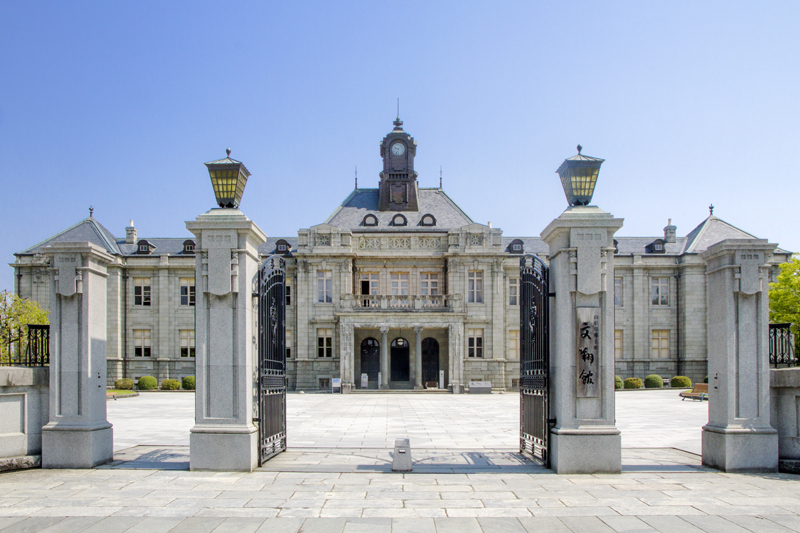
Yamagata Castle, located in the center of the city, is extremely large, and the outermost Sannomaru area covers an area of approximately 235 hectares, which is equivalent to 50 Tokyo Domes
The merchant town was built outside the Sannomaru, but the Honmaru, which stands in the center of Yamagata Castle, was obscured by mist and therefore was called "Kajo" or "Kasumigajo."
After the Meiji Restoration, the feudal domains were abolished and replaced with prefectures in July 1871 (Meiji 4), and seven prefectures were established in the area that is now Yamagata Prefecture: Yamagata Prefecture, Yonezawa Prefecture, Kaminoyama Prefecture, Tendo Prefecture, Shinjo Prefecture, Oizumi Prefecture (Tsuruoka City), and Matsumine (Sakata City)
There were many twists and turns after that, but present-day Yamagata Prefecture was born in 1876 (Meiji 9)
The first prefectural governor, Mishima Michitsune, developed the city into a suitable location for the prefectural capital
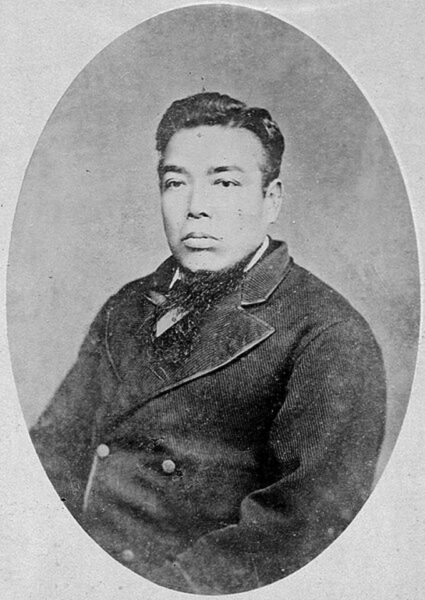
Mishima as the first governor of Yamagata Prefecture , and the prefectural office was located in what is now Yamagata City.
Yamagata City was deemed suitable as a distribution hub because it was on the Ushu Kaido road, a major artery in the Tohoku region, and also had a thriving shipping industry on the Mogami River
Other powerful domains in Yamagata Prefecture, such as the Shonai Domain and the Yonezawa Domain, were also considered as candidates, but because these domains were on the anti-government side during the Boshin War (1869), they were unable to become the prefectural capital
Mishima Michitsune was recognized by the Minister of Home Affairs, Okubo Toshimichi, and after serving as a councilor for Tokyo Prefecture and being responsible for urban redevelopment plans such as the construction of the brick town of Ginza in Tokyo, he became the first governor of Yamagata Prefecture in 1876 (Meiji 9)
Mishima Michitsune spent seven years in Yamagata from 1876, during which time he promoted urban development projects in Yamagata Prefecture, achieving many accomplishments, including the construction of the Yamagata Prefectural Office and other local government offices, as well as road improvement projects such as the construction of new roads and stone bridges
After leaving Yamagata, Mishima served as governor of Fukushima and Tochigi prefectures, among other positions, and in 1885 (Meiji 18) was appointed Superintendent General of the Metropolitan Police Department
He died in 1888 (Meiji 21). His direct descendants include former Prime Minister Taro Aso , and his relatives include Yukio Mishima
The old castle town has undergone a dramatic transformation, with large buildings made of stone instead of wood
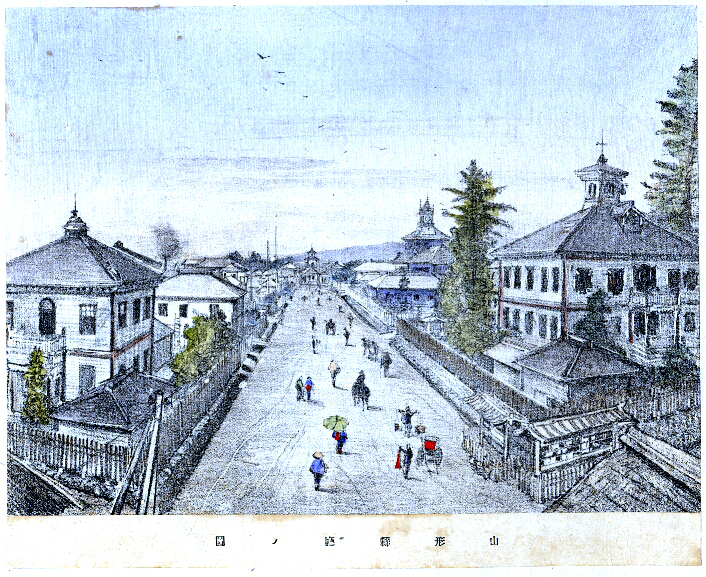
Mishima left the remains of Yamagata Castle's Honmaru and Ninomaru intact, and proceeded with urban development plans for Sannomaru. In 1877 (Meiji 10), a Western-style prefectural office was built in Nanokamachi, a shopping district that had existed since the Edo period, and the prefectural assembly building was built next to it

A wide, straight road stretches south from the Yamagata Prefectural Office, with the prefecture's major government offices and facilities concentrated there, including the police station, Normal School, and Nanzan School on the east side of the road, the police headquarters, Minamimurayama County Office, Industrial Museum, and silk mill on the west side, and the Saiseikan a little further away
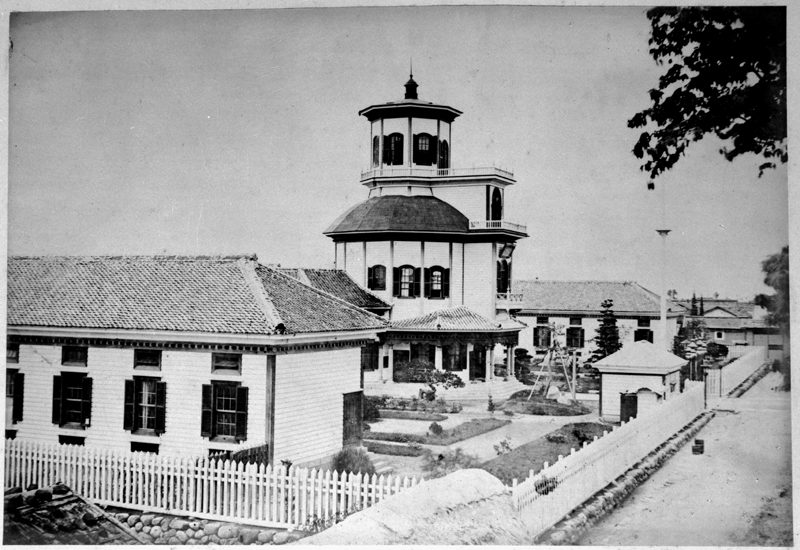
The wooden shopping streets that had been in place since the Edo period were all transformed into Western-style buildings that the locals had never seen before, and the townscape was transformed in an instant. The locals were astonished, and their hopes for a new era grew
The great fire that struck Yamagata in the Meiji era reduced the city to ashes after the Meiji Restoration
Yamagata City was hit by two major fires during the Meiji period. The first was the Minami-Ichi Fire, which burned down the southern part of the city in May 1894 (Meiji 27)
The "Ichinan Fire" started in the former Candle Town (now Tokamachi 2-chome), located in the southern part of the shopping district. Strong winds caused the fire to spread in all directions, destroying over 1,600 houses, mainly in what is now Tokamachi
In this fire, most of the old houses and merchant houses dating back to the Edo period were burned down, but the houses that were storehouses escaped the fire, and it is said that the number of storehouses increased in Yamagata City after this
In May 1911 (Meiji 44), a major fire broke out in the city's north . The fire started at a soba restaurant in what is now Nanokamachi, located north of Tokamachi, where the major fire in the south occurred, and was carried by strong winds to burn down the Nanokamachi shopping district.
The fire then spread to the government district where the prefectural office was located, burning down everything including the prefectural office, police stations, courts, schools, and banks
These two great fires reduced a total of 3,000 houses, shrines and temples, and most importantly, the new townscape created by Mishima Michitsune to ashes
Fortunately, however, the former Yamagata Normal School Main Building (Yamagata Prefectural Museum Educational Resources Center) and the former Saiseikan Main Building (Yamagata City Local History Museum) were located a short distance from the source of the fire and escaped destruction, making them valuable buildings that retain their original appearance
The rebuilt prefectural office and the National Diet Building were relocated to Bunshokan
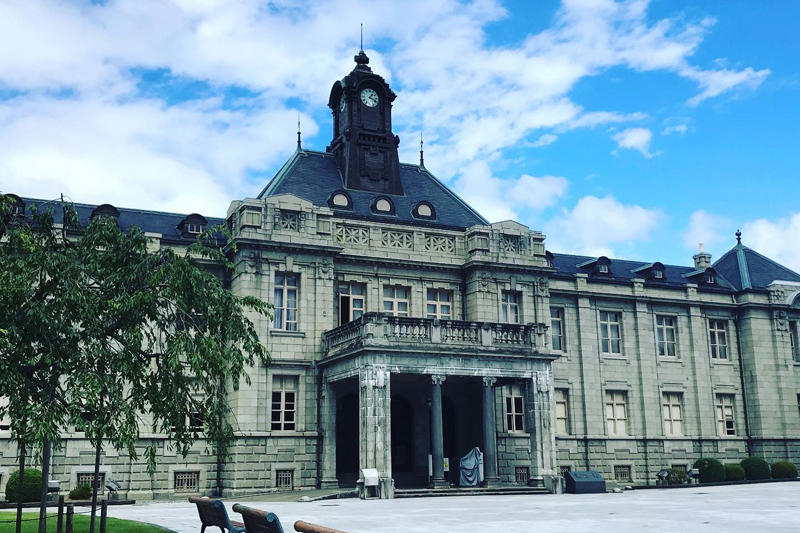
Unfortunately, the prefectural office and assembly building built by Mishima Michitsune no longer remain
The current former prefectural office and assembly building were rebuilt in 1916 (Taisho 5) and served as the Yamagata Prefectural Office and Assembly Hall until 1975 (Showa 50), when the prefectural office was newly built at its current location (Matsunami, Yamagata City)
After it ceased to function as the prefectural office and assembly hall, it underwent extensive restoration work and was opened to the public as the Yamagata Prefectural Museum (Bunshokan) Bunshokan is a nationally designated important cultural property, known as the "Former Yamagata Prefectural Office and Assembly Hall (Yamagata Prefectural Museum) .

The former prefectural office building is a three-story brick building with stone exterior walls, giving it a stately appearance, and its clock tower is the second oldest in Japan after the Sapporo Clock Tower, and continues to keep time even today. The former prefectural assembly building is also partially two-story brick, and is still used for various events such as concerts
Bunshokan<Information>
- Facility name: Yamagata Prefectural Museum (Bunshokan)
- Address: 3-4-51 Hatagocho, Yamagata City, Yamagata Prefecture
- Phone number: 023-635-5500
- Opening hours: 9:00-16:30
- Admission fee: Free
- Closed: 1st and 3rd Mondays (or the following day if a public holiday falls on that Monday), December 29th to January 3rd
- URL: Yamagata Prefectural Museum (Bunshokan)
- access:
- Train: Approximately 10 minutes by bus from Yamagata Station on the Yamagata Shinkansen or JR Ou Main Line
- By car: Approximately 10 minutes from Yamagata Zao IC on the Yamagata Expressway
Google Map
The former Saiseikan main building was relocated and restored after overcoming the threat of demolition
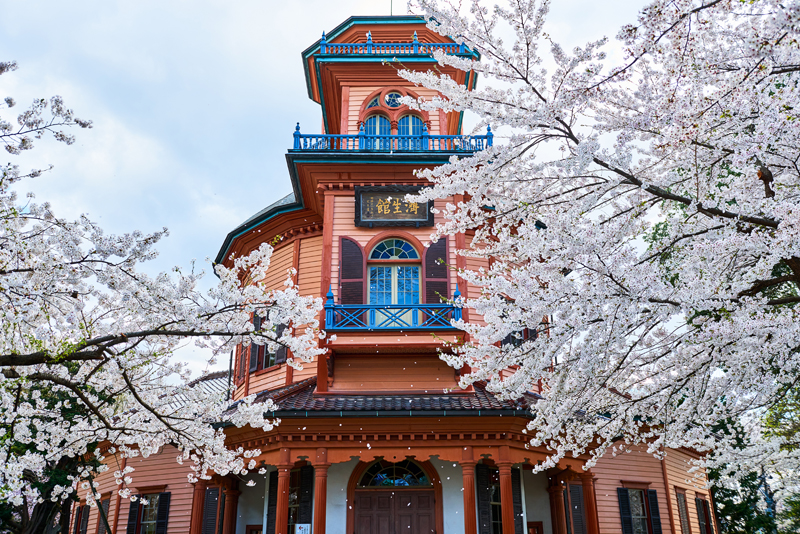
The former Saiseikan main building was established in 1878 (Meiji 11) as a prefectural hospital, and was temporarily privatized, but from 1904 (Meiji 37) it began to be used as the main building of the Saiseikan Municipal Hospital.
However, in 1960, the hospital became too cramped and it was decided to renovate the old main building, and it was decided to demolish it. However, a citizens' group, which regretted losing this valuable building from the early Meiji period, launched a preservation campaign, and as a result, the government recognized its importance and it an Important Cultural Property of Japan , thus saving it from demolition.
Because the hospital's grounds were small, it was decided to relocate and restore it to its current location in Kasumigaoka Park (the site of Yamagata Castle)
Since 1971, it the Yamagata City Local History Museum , exhibiting and displaying materials on traditional Chinese medicine and Western medicine, as well as historical materials on Yamagata Castle and the local area.
Former Saiseikan Main Building <Information>
- Facility name: Former Saiseikan Main Building (Yamagata City Museum of Local History)
- Address: 1-1 Kashirocho, Yamagata City, Yamagata Prefecture (inside Kashiro Park)
- Phone number: 023-644-0253
- Opening hours: 9:00-16:30
- Admission fee: Free
- Closed: December 29th to January 3rd
- URL: Former Saiseikan Main Building (Yamagata City Museum of Local History)
- access:
- Train: Take a bus from Yamagata Station on the Yamagata Shinkansen or JR Ou Main Line to Kajo Park South Gate bus stop, then walk for about 15 minutes
- By car: Approximately 15 minutes from Yamagata Zao IC on the Yamagata Expressway
Google Map
The former Yamagata Normal School main building still retains its original turret
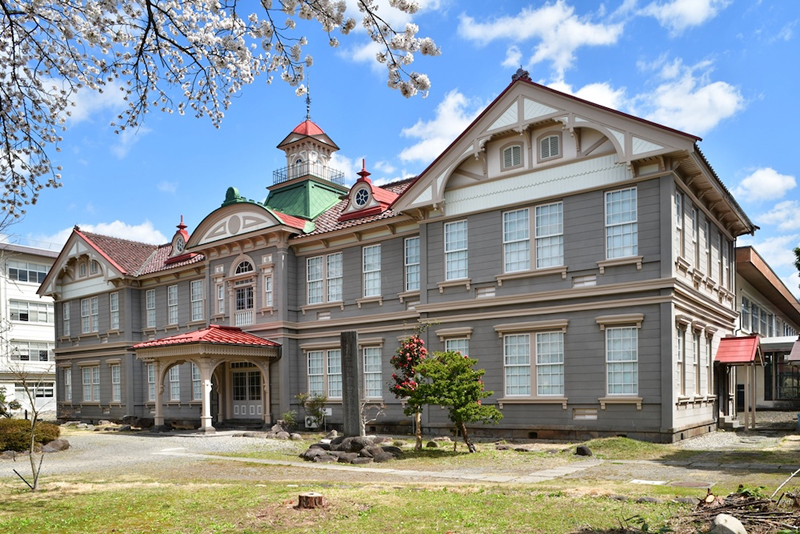
The main building of the former Yamagata Normal School was a prefectural normal school that opened in 1878 (Meiji 11), and was newly constructed in 1901 (Meiji 34) when it moved to its current location (Midori-cho, Yamagata City).
After World War II, the normal school was closed and in 1963 (Showa 38) it was used as Yamagata Prefectural Yamagata Kita High School, but in 1971 (Showa 46) Yamagata Kita High School was renovated and the school's mission came to an end
When Yamagata Kita High School was renovated, the classroom area was demolished, leaving only the main building and some facilities that remain today. However, the remaining parts were repaired and restored, and the building was designated an Important Cultural Property of Japan opened as the Yamagata Prefectural Museum Educational Resource Center
The turret in the center of the building is a remnant of the old school clock tower, which was built in 1878
Former Yamagata Normal School Main Building <Information>
- Facility name: Former Yamagata Normal School Main Building (Yamagata Prefectural Museum Educational Resource Center)
- Address: 2-2-8 Midoricho, Yamagata City, Yamagata Prefecture
- Phone number: 023-642-4397
- Opening hours: 9:00-16:30 (last entry at 16:00)
- Admission fee: Adults 150 yen, students 70 yen, elementary, junior high and high school students free (Yamagata Prefectural Museum admission fee is separate)
- Closed: Mondays (or the following day if Monday is a public holiday), December 28th to January 4th
- URL: Former Yamagata Normal School Main Building (Yamagata Prefectural Museum Educational Resource Center)
- access:
- Train: Yamagata Shinkansen/JR Ou Main Line Yamagata Station East Exit: Approximately 15 minutes on foot via the East Otemon Gate of Kajo Park, or approximately 10 minutes on foot from the West Exit via the South Gate of Kajo Park
- By car: Approximately 20 minutes from Yamagata Zao IC on the Yamagata Expressway
Google Map
During his seven years in the post, Mishima Michitsune has been involved in approximately half of Yamagata Prefecture's modern industrial heritage sites

Unfortunately, the only buildings remaining in Yamagata City associated with Mishima Michitsune are the former Yamagata Normal School main building and the former Saiseikan main building (part of it), but looking across Yamagata Prefecture as a whole, there are still buildings remaining, such as the former Nishitagawa County Office (Tsuruoka City/Nationally Designated Important Cultural Property), Tsuruoka Police Station building (Tsuruoka City/Yamagata Prefecture Designated Tangible Cultural Property), the former Nishimurayama County Office and Assembly Hall (Sagae City/Yamagata Prefecture Designated Tangible Cultural Property), the former Higashimurayama County Office (Tendo City/Yamagata Prefecture Designated Tangible Cultural Property).
All of these buildings are magnificent and designated cultural properties
It's not just buildings. They're also focusing on improving the transportation infrastructure, building new roads between cities and constructing 23 roads and 65 bridges
Some bridges were built at the request of local residents, and the financial burden was generally borne by the local community, with assistance provided where needed, reducing the prefecture's financial burden while modernizing the area
The Ministry of Economy, Trade and Industry certified the Modern Industrial Heritage Sites in 2008, and of the 26 industrial heritage sites in Yamagata Prefecture, projects undertaken by Mishima Michitsune account for roughly half. This shows the greatness of Mishima Michitsune, who was able to accomplish so many projects in such a short period of time, just seven years after he was appointed to the prefecture



![[Aizuwakamatsu City, Fukushima Prefecture] “Aizu Thirty-Three Kannon” tours around the Kitaaizu area, centering on Aizuwakamatsu 25949683_m](https://jp.neft.asia/wp-content/uploads/2023/02/25949683_m-150x150.jpg)
![[Tsuruoka City, Yamagata Prefecture] Tsuruoka City, home to four national hot spring resorts 26661228 m](https://jp.neft.asia/wp-content/uploads/2023/03/26661228_m-150x150.jpg)
![[Part 2] A day trip to Yamagata city, a sightseeing trip with a 2-5km radius from Yamagata Station on the Senzan Line [Yamagata Prefecture] IMG_2707-1](https://jp.neft.asia/wp-content/uploads/2022/07/IMG_2707-1-150x150.jpg)
![[Recommended Autumn Festivals: Yamagata Edition] Enjoy Yamagata's delicious autumn festival! 28_Shinjo Festival 1](https://jp.neft.asia/wp-content/uploads/2024/08/6ddf3aad6f42cace23ad41df9274d5da-150x150.jpg)

!["Negaseki" is one of the three ancient Oshu sekies that surpasses Minamoto Yoshitsune and Matsuo Basho [Tsuruoka City, Yamagata Prefecture] 3809167_m](https://jp.neft.asia/wp-content/uploads/2023/02/3809167_m-150x150.jpg)
![[Tsuruoka City, Yamagata Prefecture] Tsuruoka's food culture has been passed down for hundreds of years 1470_Zenpoji Temple](https://jp.neft.asia/wp-content/uploads/2023/04/2d6b75e2500adfb8f7b8e6c68a2f7a03-150x150.jpg)
![Has even a wealthy merchant with more wealth than the feudal lord appeared? Sakata's port that was moistened by Kitamae Ship [Yamagata Prefecture] Kitamae boat at Hiyoriyama Park](https://jp.neft.asia/wp-content/uploads/2023/04/4631946_m-150x150.jpg)
